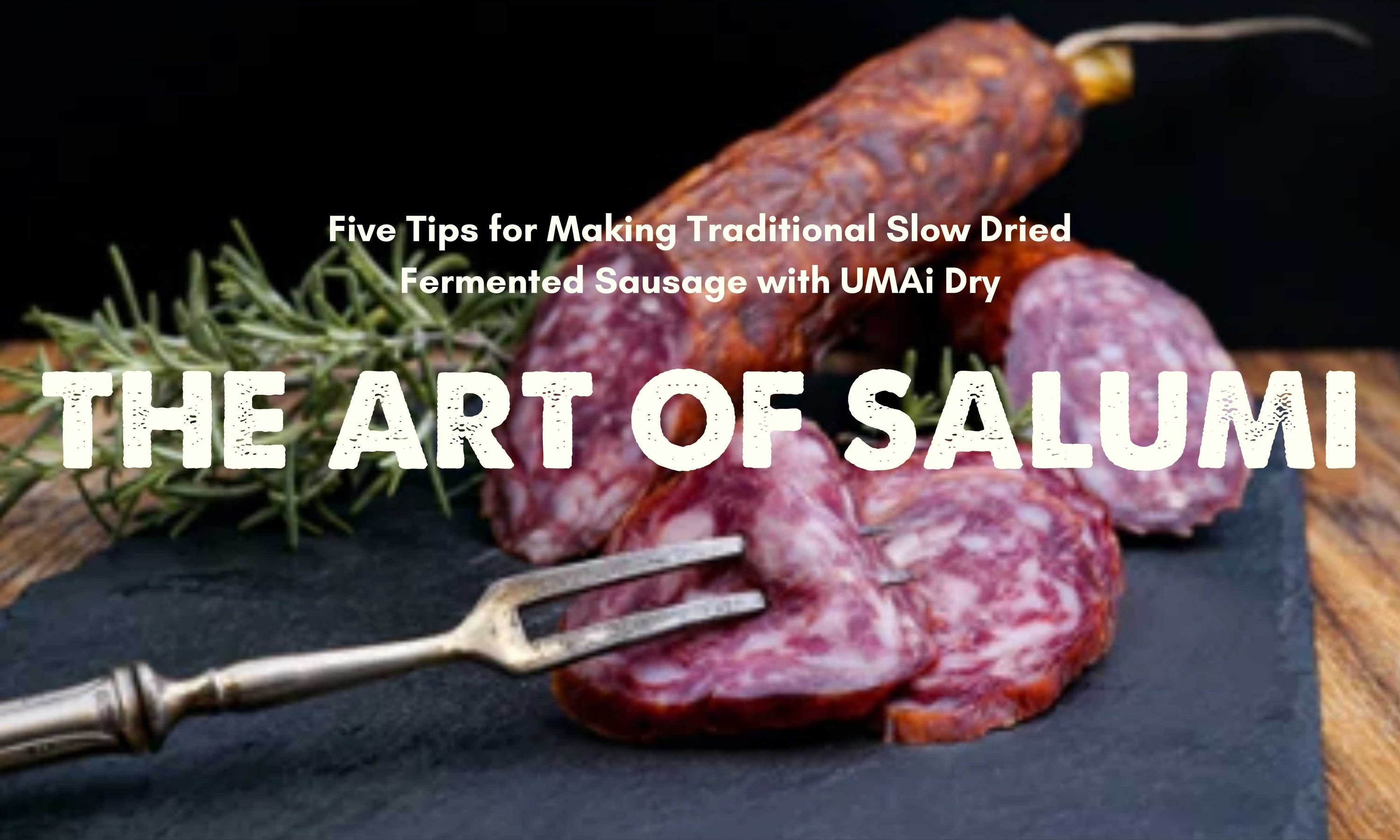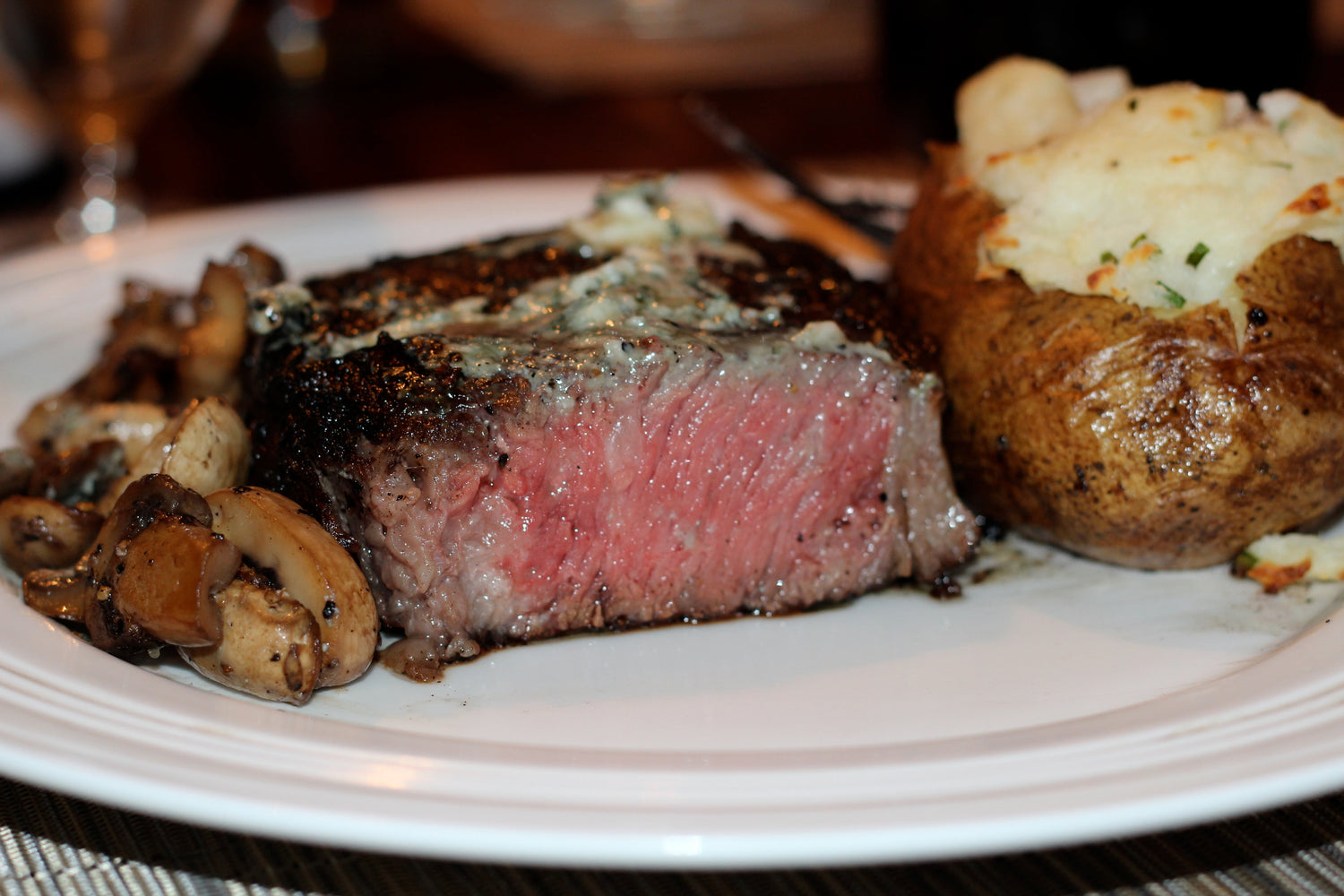UMAi Dry® makes it easy to craft good-looking and great tasting dry sausage. No cave? No problem! Follow these basic tips to ensure you get the very best results for your effort and patience.
#1: Keep the Meat Cold

Cut the meat into thick slices (+/- ¾ in./1 cm) and partially freeze prior to cutting them into cubes for grinding. Keep the meat as cold as possible through each step of the process right until it is stuffed into UMAi Dry casing. Keeping the meat cold (aka icy, nearly frozen) makes grinding and mixing easy as can be. Frozen meat grinds out with much better definition. The ground meat will also keep its shape. The defined grind will also allow the spices and cure to distribute more easily and evenly, coating each individual particle. Finally, stuffing a cold sausage mixture guarantees a well-defined appearance to the finished dry sausage, achieving a classic salumi/salume look.
#2: Grind Large

Use a large (3/8 inch) plate when grinding the meat for salumi. Larger meat particles will assist with robust fermentation and ensurefaster, more even drying. It will also give the sausage the classic texture of a fine salami. Smaller grind will take longer to dry and create a less defined texture.
#3: Blend Ingredients into Grind with Paddles

If you use hands, you end up with frozen digits and sticky meat, making even mixing next to impossible. Wood, plastic or metal paddles will help keep the ground meat cold and help coat each particle with cure and spices for an even mix. Once the spices and cure coat the sausage particles well, you can use hands to knead the mixture until it gets stiff, indicating a stable mixture.
#4: Use a Dedicated Stuffer -- Don't Risk "Re-Grinding"

This is a lesson we’ve learned the hard way. Hand grinders and grinder stuffer attachments will generally result in paste like or doughy re-ground meat; not very undesirable for a classic Salumi. A dedicated stuffer will work more gently, preserving the structure of the meat. The result is the well-defined particle pattern of classic salami.
Check out this guide for sausage stuffers:
https://www.smokedbbqsource.com/best-sausage-stuffer/
#5: Ferment in a Protected Space -- Limit Airflow

Fermentation is one of the most critical steps in making dry sausage. During this step, the sausage should be prevented from drying. Fermenting sausages should be placed in an area with little to no air movement. Rapid airflow can dry out the outside of the sausage preventing the outer surface from properly fermenting. As a result, you may have uneven drying and poor appearance of the finished product. We’ve begun to use an oven or similar enclosed space. One sausage maker showed us how he rigged up a paper grocery bag umbrella-style to shelter the batch of sausages he hung to ferment.
These are practices we’ve found helpful in our pursuit of making better and better dry sausage. We hope they help you get one step closer to mastering the Art of Salumi.




